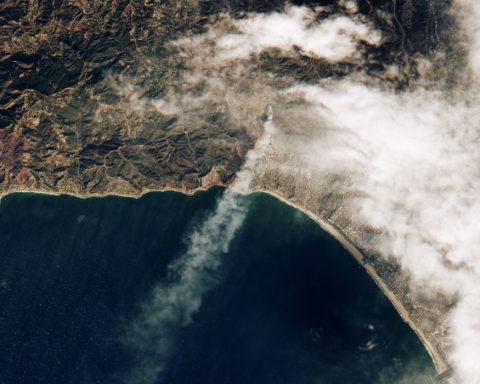In 2012, the International Energy Agency’s World Energy Outlook report legitimized the notion of unburnable carbon in one sentence: “No more than one-third of proven reserves of fossil fuels can be consumed prior to 2050 if the world is to achieve the 2°C goal, unless carbon capture and storage (CCS) technology is widely deployed.”
On Jan. 19 that year, a group of investors wrote a letter to the governor of the Bank of England, Mervyn King, requesting that its Financial Policy Committee look into the systemic economic risks of certain carbon-based assets being stranded. Less than two weeks later, King replied with his own letter assuring that the bank would further evaluate the risk of stranded assets. He also outlined the three key conditions by which the unburnable carbon thesis could plausibly have adverse effects on the economy:
- The economy is significantly exposed to carbon-intensive sectors;
- Markets are not already pricing the risk of stranded assets;
- Any subsequent correction would occur too quickly to allow for an orderly adjustment.
Fast forward to Oct. 30, 2014. Mark Carney, the new Bank of England governor, makes international headlines by stating “the vast majority of reserves are unburnable if global temperature rises are to be limited to below 2⁰C.”
Three days later, Carney committed in writing to monitor the financial risk of unburnable carbon, referencing the Bank of England’s in-depth first draft report on the subject targeted for July 2015.
Meanwhile in Canada, federal Finance Minister Joe Oliver and Alberta Premier Jim Prentice are reeling from the fiscal blow dealt by the decline in oil revenues, and there has not been a peep on the topic of stranded carbon assets from Stephen Poloz, governor of the Bank of Canada.
In remarks on Jan. 13 to the Madison International Trade Association (MITA), Timothy Lane, deputy governor of the Bank of Canada, shed some light on how the bank is looking at the recent dip in oil prices. He highlighted the health of the oil sector as “among the most important” variables the Bank of Canada takes into account in setting policy. But he downplayed the long-term significance of the recent decline in oil prices, because higher-cost oil is still likely to be needed to feed the commodity super cycle driven by the growing global demand from the burgeoning and urbanizing middle class in emerging markets.
Up until recently, unquestioned fidelity in the commodity super cycle and its implications for ever-rising demand for Canada’s expensive oil sands seemed like a safe assumption. Then again, who would have guessed that oil prices would slide 60 per cent in the past six months and that China would agree to put a hard cap on its carbon emissions by 2030, which they did this November?
To be on the safe side, let’s consider the potential risk of stranded oil sands assets in the context of Mervyn King’s three conditions.
- The economy is significantly exposed to carbon intensive sectors.
In Canada, oil extraction now accounts for about 3 per cent of GDP and crude oil about 14 per cent of our exports.
- Markets are not already pricing the risk of stranded assets.
That may be the case at the moment, as most oil companies are valued on short-run cash flow and not the health of their long-term balance sheet. But is it a safe assumption that this will hold indefinitely? Remember when Shell had to restate their reserves back in 2004, and their share price was pounded down by 10 per cent, followed by several securities fraud class action suits?
- Any subsequent correction would occur too quickly to allow for an orderly adjustment.
This condition is subject to the animal spirits of the market. But there are at least four plausible scenarios that could be the pinprick to the carbon bubble.
One is that a major rating agency could move to downgrade oil sands companies. Standard & Poor’s rating service is closely monitoring the oil sands and in a report titled, “What A Carbon-Constrained Future Could Mean For Oil Companies’ Creditworthiness,” S&P stated: “Financial models that only rely on past performance and creditworthiness are an insufficient guide for investors. We note that under a meaningfully lower long-term oil price, the commercial viability of undeveloped reserves and hence the core business model could come into question unless development costs also fall. This could potentially result in a downgrade of more than one notch if we were to place less reliance on undeveloped or probable reserves than at present.”
Second, a large hedge fund could spur a rush to reduce oil sands exposure by shorting the highest cost oil producers with the highest debt levels.
Third, the Bank of England’s stranded carbon assets report due in July could turn market sentiment skittish on high-cost oil producers.
Finally, a strong deal at the Paris climate summit in December – one that sets a global-emissions reduction target – could shake market confidence in the ability of high-cost oil producers to harvest all their assets.
None of this is to suggest that blue-chip majors like Suncor are going to go out of business, especially considering the low “cash cost” of pumping oil from existing operations. But it does raise important questions about further investments in the oil sands, when you consider that 92 per cent of undeveloped oil sands projects need more than $95 per barrel prices to provide a 15 per cent internal rate of return.
If the market begins to accept the stranded assets thesis, Canada’s high cost oil sands will be the first to be abandoned by the impersonal forces of the market.
That’s potentially a big problem, as it doesn’t appear the Bank of Canada and Departments of Finance in Alberta and Ottawa have a Plan B. “The Bank of Canada does not have plans at this time to publish a report similar to that of the Bank of England,” was the e-mail response Corporate Knights received Thursday from a bank spokesperson.
“These are important questions,” she continued. “We carefully study the impact on the Canadian economy of all important developments in the oil market; as you know, we do this in the context of conducting monetary policy in order to achieve our inflation target.”







